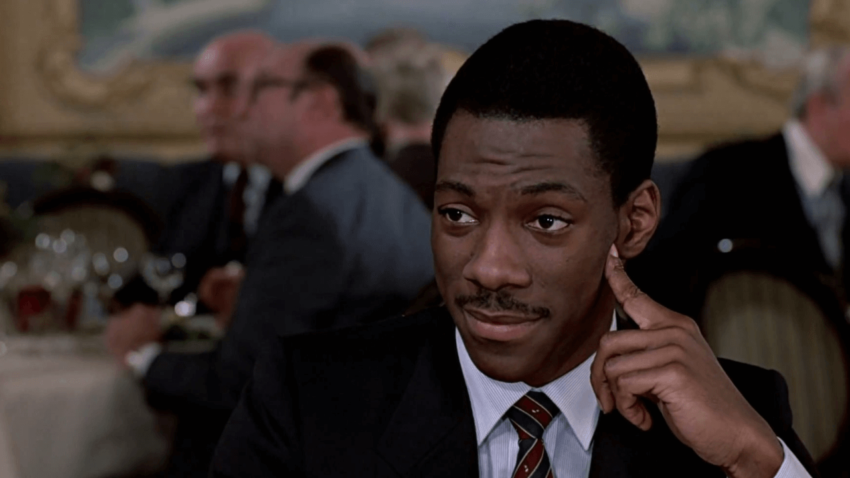Think of your favorite person to work with at your company.
Imagine yourselves working through a challenge—having meetings, collaborating on a solution, finally solving the problem.
For you two, this is probably quick and easy work, day in and day out.
But have you ever wondered why that is? Why you two just seem to “click” and work so well together?
Of course, there’s more than one answer to those questions, yet one of the answers is always the same: you two enjoy each other’s communication style.
Over the years, more and more research has been done on communication styles and their importance in our interpersonal relationships. Turns out how we speak to others—verbally and physically—goes a long way in helping or hurting the way others feel about us.
When you think about it, this isn’t all too surprising. That boss you once had who was loud and mean? Not a shocker you didn’t love working for him. That manager at your company who’s empathetic yet assertive? No wonder she’s the one with the highest performing team.
It all becomes clear when you sit down and really think about it.
But think about what, exactly? What are these mysterious communication styles? And how do you know which one is yours?
For all that and much more, keep reading. Here’s everything we’ll cover:
- What are “communication styles”, exactly?
- The 5 types of communication styles
- Your communication style, revealed: The communication style quiz
🔍 Are you thinking about purchasing a new communication tool and unsure how to get started? Here’s a checklist to help you pick the right one for your business.
What are communication styles, exactly?
Communication styles are, generally speaking, the ways in which people communicate with one another. Although styles of communication are typically referred to in verbal terms, physical gestures and body language are also integral parts of the equation.
So, technically, communication styles include the way you:
- Speak to others
- Respond to others
- Act toward others
- Interact with others
- Look at others
If that seems like a large umbrella of ways to communicate, well, it is. But that’s because communication involves so much more than merely words and the way you use them.
With that being said, we’ll be focusing on the verbal aspect of communication for the majority of this article, as it is the most commonly used and impactful form of interacting with others.
Now… you’re probably wondering about the five different communication styles, right? Well, let’s take a look.
The 5 types of communication styles
#1 Aggressive communication style
That hypothetical loud, mean boss we were talking about earlier? Yup, he is an aggressive communicator.
These are the people who yell, scream, demand, criticize, harass, and ridicule like it’s their job. (Spoiler alert: it’s nobody’s job to do those things.) You’ll be able to spot an aggressive communicator rather quickly, typically by their arrogant strut and commanding presence. They act like they belong even when they don’t, and they’re pros at keeping intense eye contact going throughout an engagement.
Although often loud, obnoxious, and disrespectful, aggressive communicators have a knack for ascending corporate ladders and finding themselves at the heads of tables. Why that is, well, that’s a bit of a mystery, but part of it has to do with their appearance of power and confidence, even though much of it is contrived.
What to do to work successfully with aggressive communicators:
- Set boundaries constantly—don’t police them, but keep them in check
- Pull them into a private room when they’re getting out of line
- Educate them on how their communication style is impacting others
- Never let them get away with talking over others
- Set a speaking order at meetings and make them speak last
You’ll know you’re interacting with an aggressive communicator when:
- They keep talking about themselves and their successes
- You start to feel uncomfortable from the relentless eye contact
- They talk over you or someone else
- They begin criticizing and ridiculing someone
- They interrupt you constantly
TV and movie characters with an aggressive communication style

- Jordan Belfort, The Wolf of Wall Street
- Fletcher, Whiplash
- Miranda Priestly, The Devil Wears Prada
Recommended communication technology for aggressive communicators
Of all the business communication styles, this one may be the easiest to identify, regardless of communication method. It truly does not matter what communication technology you use with aggressive communicators, as they will always say what they want as loudly and obnoxiously as possible—whether it’s through screams on the phone or written messages in bold and all caps. What we’re saying is: if you’d like to preserve your hearing for as long as possible, look into messaging apps and keep your vocal communications with aggressive coworkers to a minimum.
#2 Passive communication style
In the passive communicator, you have a person who is unapologetically quiet most of the time. This person shies away from eye contact, debate, conflict, you name it. Any conversation remotely emotional and impassioned is going to make this person retreat into themselves.
Passive communicators almost always struggle with voicing their opinions, and they often give way to others. These are the men and women in meetings who hardly ever say anything. However, this doesn’t mean they don’t have anything to say. And this certainly doesn’t mean passive people are disinterested in working for your business. Sure, they may be awkward leading a large group, but that’s because they’re just more comfortable keeping to themselves and doing their own thing.
What to do to get the most out of passive communicators:
- Use passive-friendly communication methods, like messaging or email
- Check in on them occasionally, but don’t micromanage
- Make an extra effort to engage with them one-on-one
What not to do with passive communicators:
- Force them into a leadership position they aren’t fit for
- Publicly “encourage” them to share their opinions more often
- Grow irritated with their reserved nature and try to make them open up
You’ll know you’re interacting with a passive communicator when:
- They’re uncomfortable making eye contact with you
- Their posture is slouched and they seem disengaged
- You’re carrying the conversation and they’re only providing short answers
TV and movie characters with passive communication style

- Bella Swan, Twilight
- Bilbo Baggins, The Hobbit
There are none (at least not worth mentioning)! Passive characters can’t carry a storyline because they, well, kind of just go with the flow and let life happen to them. So, it’s rare—if not impossible—to find a truly passive protagonist.
Recommended communication technology for passive communicators
Written communication—like email and messaging—is recommended for passive communicators:
Of course, that’s not the only communication technology you should invest in for this group of people. It’s vital to have a nice, personal, face-to-face check-in with your passive employees every now and again, and with remote work becoming the new normal, that’s only possible through video conferencing solutions. So, for passive communicators, we suggest using an all-in-one communications platform like RingCentral Office.
#3 Manipulative communication style
Arguably the least coveted of communication styles, the manipulator is someone who always has an ulterior motive at stake in their communications.
These men and women, though intelligent and calculated, are typically childish and insecure. They are incredibly quick to put up their guard and go on the defensive, particularly when challenged on a topic, and especially when one of their manipulative plans begins to fall apart.
Manipulators like to pit people against each other if they believe it will help improve their situation. They are impressive in appearance, confident in nature, and captivating with their words—of which they use many to spin their webs, confuse, and deceit others.
No, the manipulator isn’t exactly a stand-up person. And yet, they often find themselves in leadership positions precisely because of their sly ways.
How to deal with a manipulative communication style:
- Always fact-check what they tell you with someone else
- Ask pointed questions to make sure they keep their stories straight
- Never entertain one of their tantrums or angry fits
You’ll know you’re dealing with a manipulative communicator when:
- They always place the blame on someone else
- They reveal stories of how they deceived somebody in the past, almost like they’re bragging
- They’re entirely self-interested and self-concerned
- They engage confidently and enjoy starting arguments
- They insist on doing what they want, when they want, and how they want
TV and movie characters with a manipulative communication style

- Ruth Langmore, Ozark
- Frank Abagnale Jr., Catch Me If You Can
- Regina George, Mean Girls
Recommended communication technology for manipulative communicators
Based on manipulators’ penchant for twisting truths and trying to get over on people, it’s wise to communicate with them in writing as much as possible. Knowing this, you’ll want to rely on email and a messaging app to communicate with manipulators. This way, there’s no trickery, and absolutely no mistaking who said what and when they said it. Even better if your messaging app has a Search function so you can easily find proof of past conversations:

#4 Passive-aggressive communication style
When it comes to communication styles in the workplace, the passive-aggressive communicator is arguably the most unpredictable.
These are people who are passive on the outside—quiet, unassuming posture, disengaged during meetings—yet contain an aggressive streak on the inside. Passive-aggressives often reveal their resentment and anger toward a person in subtle ways—muttering under their breath, rolling their eyes, saying something sarcastic. They can be destructive to a company if their passive-aggression overcomes them and they begin disrupting meetings, team events, and working sessions.
How to deal with a passive-aggressive communication style:
- Never entertain their sarcasm or pessimistic sense of humor
- Always support them with positive reinforcement about their work
- Provide constructive criticism from an empathetic and positive perspective
- Never critique them harshly in front of others
- Call them out on their deflating ways if necessary
You’ll know you’re dealing with a passive-aggressive communicator when:
- They give you snarky responses
- Their body language is in opposition with their words
- You get the silent treatment from them
- They begin spreading rumors around your company
- They try to convince others of somebody’s supposed wrongdoings
TV and movie characters with a passive-aggressive communication style

- Kevin McCallister, Home Alone
- Marie Barone, Everybody Loves Raymond
- Jack Byrnes, Meet the Parents
Recommended communication technology for passive-aggressive communicators
Similar to manipulators, when it comes to passive-aggressive communicators, you’re going to want to lean towards email and messaging apps like the RingCentral app. Why? Because when communicating with passive-aggressive people, there is a lot of room for error. They may say something they don’t mean, or mean something they don’t say, which could cause some painful headaches in the future. As a result, you’re better off getting everything in writing. That way, they’re forced to give a little bit more thought to what they say to others, not to mention the fact that you now have a paper trail to hold them accountable.
#5 Assertive communication style
The holy grail of communicators, assertives are typically the leaders of successful teams and organizations. That’s because assertive men and women are open and outgoing, yet respectful of people’s space. They aren’t micromanagers and they don’t overburden their teams, but they do set expectations and aren’t afraid to push buttons in order to get a desired result.
Assertive people are experts at rallying people around a cause and charging toward a mission. They speak firmly and confidently, yet with a sincere humility that makes others believe in them and gravitate toward them. They know what they want, and they know how to unlock the best in the people around them.
Yet perhaps the most admirable thing about assertives is their willingness to stand up for what they believe in. They are genuinely unafraid to speak their minds, even if it could cost them everything. And this doesn’t just apply to them, either—they’ll gladly stick up for others and give a voice to the voiceless if they believe in the cause themselves.
How to work with an assertive communication style:
- Trust them and get out of their way
- Let them take the lead if they are fit to do so
- Engage in regular dialogue and eye contact
- Offer up ideas, opinions, and solutions
- Be confident in what you have to say
You’ll know you’re working with an assertive communicator when:
- You feel inspired by what they have to say
- You feel a responsibility to offer something to the conversation
- They lift you up and make you feel good about your work
- You feel comfortable with the steady eye contact and open dialogue
- They say “no” without fear or hesitation
TV and movie characters with an assertive communication style

- Billy Ray Valentine, Trading Places
- The Bride, Kill Bill
- Elle Woods, Legally Blonde
Recommended communication technology for assertive communicators
For assertive communicators, it really doesn’t matter. They’re able to handle communications on a broad range of technological platforms, and enjoy doing so, too.
They’re thorough and reliable on email. They’re responsive and efficient on messaging. And, perhaps most importantly, they’re engaging and energetic on phone and video calls. If they had to choose one communication technology to use for everything, they’d most likely pick video conferencing, as they love making eye contact and verbally speaking with others.
So, with that being said, an all-encompassing platform with a video conferencing solution like RingCentral Video, would be ideal for people with an assertive communication style:
Shopping for a video conferencing tool? (Or just curious about what to look for?) Grab the free checklist to help you choose the right one for your team or business.
Your communication style, revealed: The communication style quiz
Question 1
When speaking to someone, you…
- Hold eye contact constantly
- Can barely look them in the eye
- Look them in the eye but are thinking about what you’re going to say next
- Find that your actions and words oppose each other
- Maintain normal eye contact and engage regularly
Question 2
When you’re in a meeting with others, you…
- Yell and insult people to get what you want
- Slouch in your chair and doodle in your notebook
- Say things convincingly without knowing if you’re right
- Find yourself rolling your eyes or muttering under your breath
- Command the room’s attention every time you say something
Question 3
When it comes to coworkers, you…
- Like the quiet ones who don’t question what you say
- Prefer to be unbothered by managers and leaders
- Love tricking them and playing mind games
- Put up with most of them, even though you can’t stand them
- Enjoy working with them and getting the best out of everyone
Results
A answers = Aggressive communication style
B answers = Passive communication style
C answers = Manipulative communication style
D answers = Passive-aggressive communication style
E answers = Assertive communication style
If you answered two or three questions with the same letter, then chances are you have that communication style. However, if you answered with a different letter for each question, then congratulations—you’re a mystery communicator!
What’s your communication style?
If you’re hoping you can totally revamp your communication style in the blink of an eye… not so fast. Your communication style today is going to be your communication style tomorrow. And it’s rare that it’ll ever completely change, but that doesn’t mean you can’t practice and improve the way you interact with people.
Start optimizing your communication style by paying closer attention to the way you speak to others and how you act around them. Notice your body language, the words you use, and the tone of your voice. Another helpful thing to pay attention to is the way superior communicators at your company speak with coworkers, managers, and customers. Take notes on the things they say and how they say them. Study those notes, keep doing your research and self-education, and begin implementing some of the things you learn.
It’s an arduous process, but one that absolutely works and eventually reaps great rewards.
Originally published Dec 04, 2020, updated Jun 19, 2024






